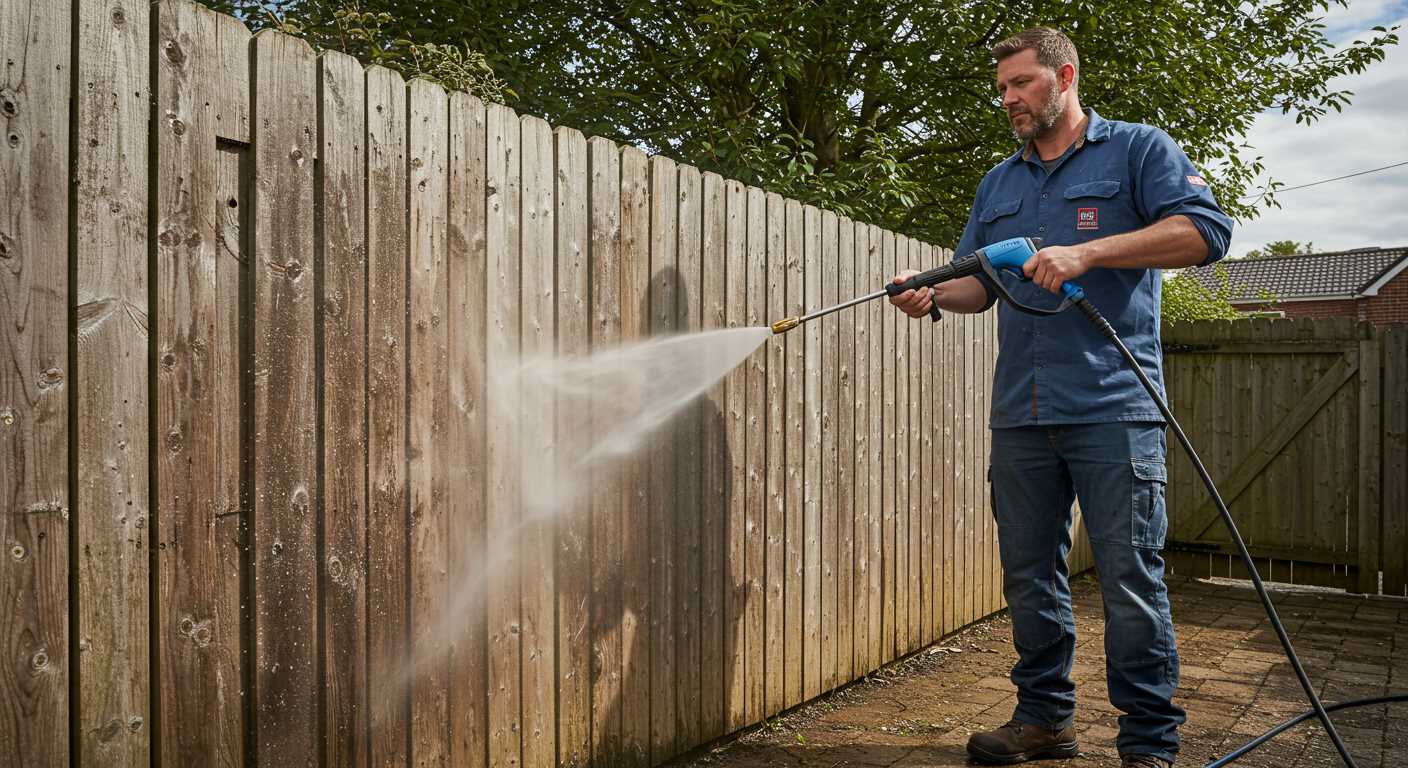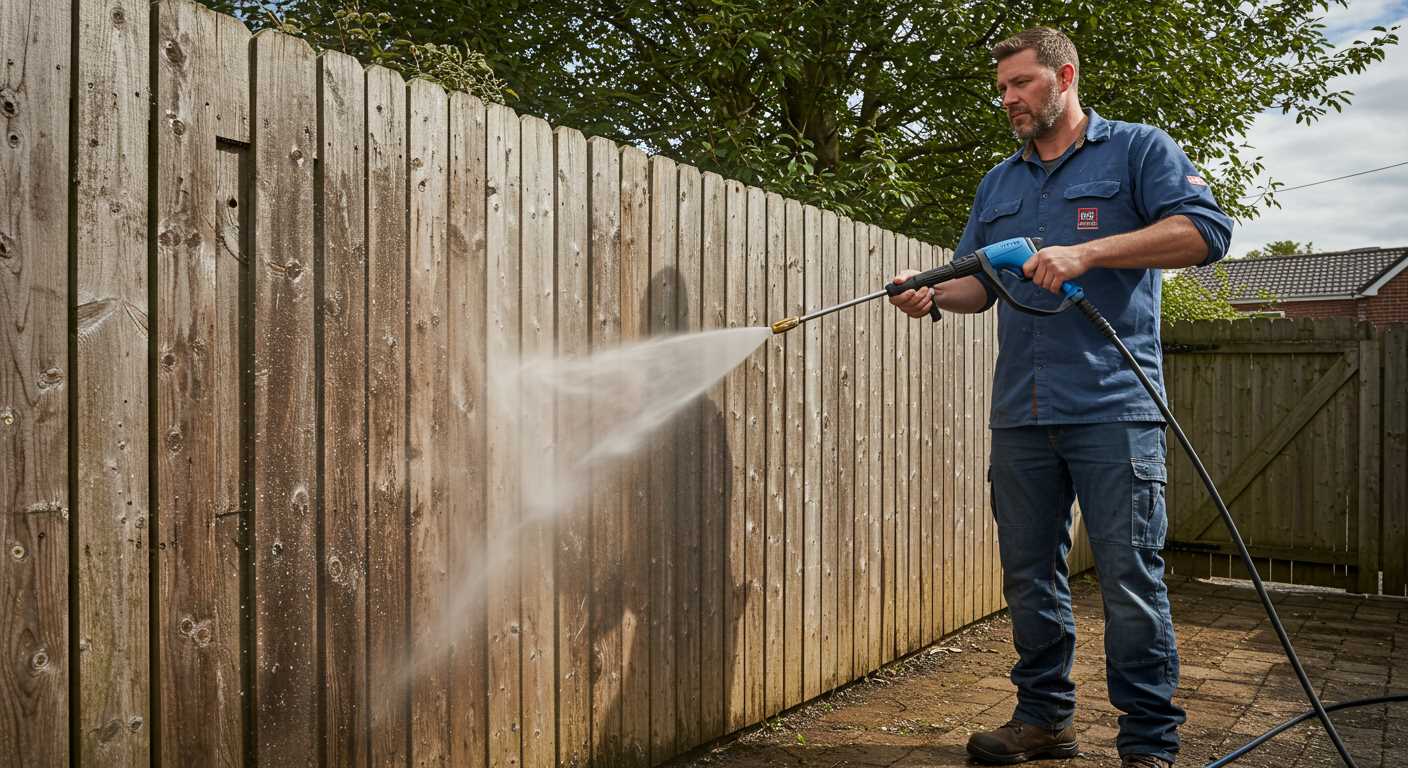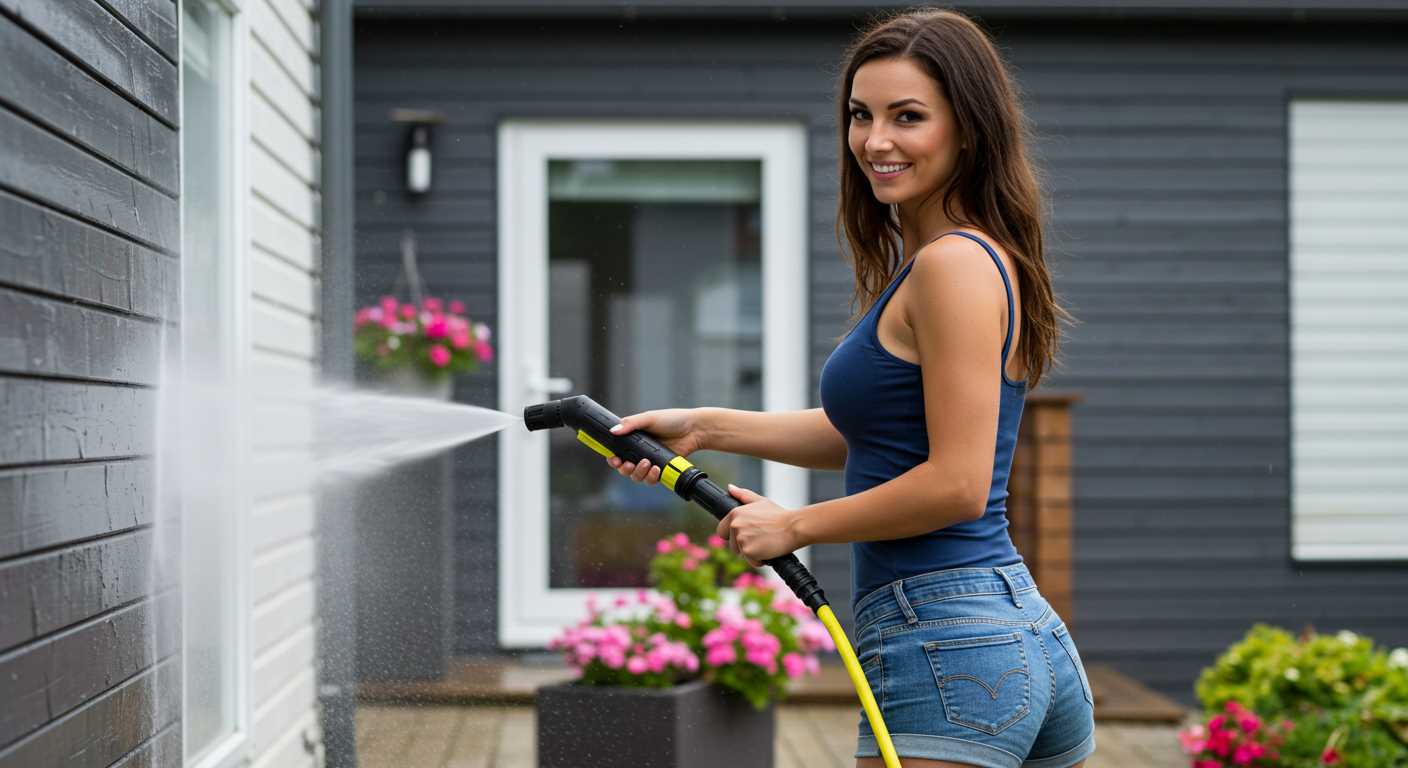




Regular checks on seals and hoses can prevent leaks and ensure optimal performance. I once encountered a model that was losing pressure due to a worn-out O-ring. A simple replacement saved the device from an early retirement and restored its efficiency.
After each use, it’s wise to flush the system with clean water. I remember a time when I neglected this step, and the residue build-up led to clogged nozzles. A quick rinse could have saved me hours of troubleshooting and repairs.
Storage matters just as much as use. During winter, I always drain the water from the unit to avoid damaging components from freezing. I learned this the hard way when a friend stored theirs without draining, resulting in costly repairs the following spring.
Regularly checking the filter is another key practice. I’ve seen how a dirty filter can restrict flow and lead to overheating. Cleaning it every few months ensures consistent performance and longevity.
Finally, never underestimate the power of a thorough inspection before use. I’ve often found that a quick visual check can catch potential issues, from loose fittings to cracked parts, before they escalate into bigger problems. Taking these steps will ensure your cleaner remains a reliable tool for years to come.
Regularly check and clean the water filter
Inspect and clean the water filter every few uses. A clogged filter can lead to reduced performance and potential damage to your equipment. Simply detach the filter from the water inlet. Rinse it under running water to remove any debris or sediment. If you notice any signs of wear or damage, replace it immediately.
During one of my routine checks, I found that a small piece of gravel had lodged itself in the filter. It was surprising how much that tiny obstruction affected the flow rate. Once I cleared it out, the machine operated like new again. This simple action can save you from costly repairs down the line.
For those using hard water, consider using a filter system to reduce mineral deposits. This can prolong the life of your equipment and maintain optimal performance. If you’re in an area with a lot of sediment, cleaning the filter after every few uses is advisable. A clean filter means consistent pressure and a longer lifespan for your unit.
Whenever you finish a job, take a moment to inspect the filter. Make it a habit. This small maintenance step can pay off significantly, ensuring your tool remains reliable and effective for years to come.
Inspect and Replace High-Pressure Hoses as Needed
Always inspect the high-pressure hoses for any signs of wear, such as cracks, abrasions, or bulges. I recall a time when a seemingly minor flaw led to a major leak during a job, resulting in unexpected delays and frustration. Regular inspections can prevent such mishaps.
Check the connections at both ends of the hose for tightness. Loose fittings can lead to loss of pressure and inefficient operation. A simple twist with a wrench can often resolve this issue. If you notice any dampness around the fittings, it might indicate a need for replacement.
When replacing hoses, ensure you choose the right diameter and length for your model. I once grabbed the wrong length in a hurry, thinking it would suffice, only to find I couldn’t reach the areas I needed to clean. Always refer to your equipment’s manual for specifications.
After replacing a hose, run your unit briefly to check for leaks. If you spot any, re-tighten the connections or consider further inspection of the hose. It’s a quick step that can save time and resources later.
Store hoses properly to avoid kinks and damage. I’ve seen too many hoses ruined simply by improper storage. Use a hose reel or wrap them neatly to preserve their integrity.
Finally, consider the age of your hoses. If they’re more than five years old, it might be time for new ones, even if they appear fine. I’ve found that older hoses can fail suddenly, and it’s best to be proactive rather than reactive.
Keep the spray wand and nozzles free from blockages
Regular inspection and cleaning of the spray wand and nozzles are key to maintaining optimal performance. A blocked nozzle can severely impact water flow and pressure, leading to inefficient cleaning.
Steps to ensure clear spray wand and nozzles:
- Detach the spray wand: Remove it from the machine after each use to allow thorough cleaning.
- Flush with clean water: Run clean water through the wand to dislodge any debris. This should be done periodically, especially if you notice a decrease in performance.
- Inspect the nozzles: Look for any signs of blockages. Use a small tool, like a toothpick, to gently clear away any buildup.
- Soak in vinegar: For stubborn blockages, soaking the nozzles in vinegar for a couple of hours can dissolve mineral deposits.
Regular checks:
Make it a habit to inspect your equipment before major cleaning tasks. A quick check can save you time and frustration later. If you find persistent blockages that can’t be resolved through cleaning, it might be time to replace the nozzle or wand.
- Keep spare nozzles on hand for quick replacements.
- Consider using a nozzle cleaner kit for thorough maintenance.
In my experience, neglecting the spray wand and nozzles often leads to underwhelming results. A few minutes spent on these components can significantly enhance the cleaning experience and extend the life of your equipment. Trust me, it’s worth it.
Flush the system after each use to prevent clogs
After you finish cleaning, always flush the system. This simple step can save you from future headaches and costly repairs.
Here’s how I do it:
- Disconnect the spray wand and nozzle.
- Turn on the machine briefly to allow water to flow through the system without any attachments. This helps clear out any residual detergent or debris.
- Shut off the unit and disconnect the water supply.
- Run the machine for a few seconds to drain excess water, preventing stagnant water from causing corrosion or clogs.
In my experience, neglecting this step led to blockages that were a nightmare to clear. A few minutes spent on flushing can extend the life of your equipment significantly.
Also, consider using a dedicated cleaning solution designed for your unit, as this can aid in flushing out stubborn residues more effectively.
Regularly flushing the system helps maintain optimal performance and reliability for your cleaning tasks. Trust me, your future self will thank you for it!
Store the Equipment in a Dry and Protected Area
To ensure longevity, place the unit in a sheltered space, away from moisture and direct sunlight. I recall a colleague who left his device outside during the rainy season. It didn’t take long for rust to develop, damaging the motor and other internal components. A simple shed or garage can do wonders. If outdoor storage is your only option, consider using a waterproof cover to shield it from the elements.
Temperature Considerations

Keep the machine at a stable temperature. Extreme cold can lead to water freezing inside the pump, which can cause cracks. I’ve seen this happen when someone stored their equipment in an unheated garage during winter. If temperatures drop significantly, it’s best to bring it indoors or at least to a heated area to avoid any potential damage.
Organise Accessories
Store all attachments and hoses neatly. I’ve learned the hard way that tangled hoses can lead to kinks and tears. Use hooks or reels to keep them tidy. A designated box for nozzles not only prevents loss but also keeps everything organised for your next cleaning task. Just like how a digital camera looks almost identical to a traditional camera, having your equipment arranged makes it easier to find what you need quickly.
Perform Routine Checks on Electrical Connections and Cables
Inspecting electrical connections and cables should be a regular part of your upkeep routine. Start by unplugging the unit and visually examining the power cord for any signs of wear or damage. Look for frayed wires, exposed copper, or cracks in the insulation. If you spot any issues, replace the cord immediately to avoid hazards.
Connection Integrity
Ensure that all connections are tight and free of corrosion. Loose connections can lead to poor performance or electrical failures. If you see any rust or corrosion on connectors, clean them with a wire brush or electrical cleaner. For a more secure fit, consider applying dielectric grease to the connectors to prevent moisture accumulation.
Testing Components
Utilising a multimeter can help you assess the functionality of various components. Measure the voltage at the plug and ensure it matches the specifications of your device. If you notice discrepancies, there could be an issue with your outlet or the internal wiring of the cleaner itself. Regular testing can save you from unexpected breakdowns during critical cleaning tasks.
Monitor and maintain oil levels in the pump
Regularly checking the oil levels in the pump is crucial for optimal performance. A well-lubricated pump reduces friction and wear, extending the lifespan of your machine. I recall a time when I neglected this step, leading to a costly repair. Here’s how to ensure your pump stays in great shape:
First, locate the oil reservoir on your equipment. It’s typically marked and easily accessible. Use a dipstick to check the oil level; it should be within the recommended range specified in the user manual. If it’s low, it’s time to top it up with the appropriate oil type–usually a high-quality detergent oil.
Here’s a quick reference table for oil maintenance:
| Action | Frequency | Notes |
|---|---|---|
| Check oil level | Before each use | Ensure it’s within the recommended range. |
| Change oil | Every 50 hours of operation | Use manufacturer-recommended oil. |
| Inspect for leaks | Monthly | Look for any signs of oil leakage around the pump. |
After adding or changing oil, run the washer for a few minutes to circulate the new oil, then recheck the level. This ensures everything is lubricated correctly. Skipping this routine can lead to pump failure, which I’ve seen happen too often. Trust me, staying vigilant about oil levels pays off in the long run.
For those considering various models, you might want to explore options like a petrol pressure washer ireland that offers robust performance.
Read the user manual for specific maintenance guidelines
Always refer to the user manual for precise care instructions tailored to your model. I recall a time when I overlooked this crucial step and ended up missing out on vital maintenance insights unique to my equipment. Each model can have distinct requirements, from recommended cleaning agents to specific procedures for winterisation. The manual often includes troubleshooting tips that can save you time and effort when issues arise.
For example, I once faced a situation where the machine wasn’t delivering adequate pressure. A quick glance at the manual revealed a simple fix: an adjustment of the pressure settings that I had completely overlooked. Such insights can make a significant difference in performance and longevity.
Additionally, manuals often provide valuable diagrams. The visual guidance on parts can be a lifesaver, especially when it comes to identifying components that require attention or replacement. Knowing precisely what to check can streamline your maintenance routine and keep everything running smoothly.
Don’t underestimate the importance of staying aligned with the manufacturer’s recommendations. Following the guidelines outlined in the manual will help ensure you get the best possible lifespan and efficiency from your machine. I’ve learned the hard way that ignoring these details can lead to unnecessary repairs and headaches down the line.





.jpg)


